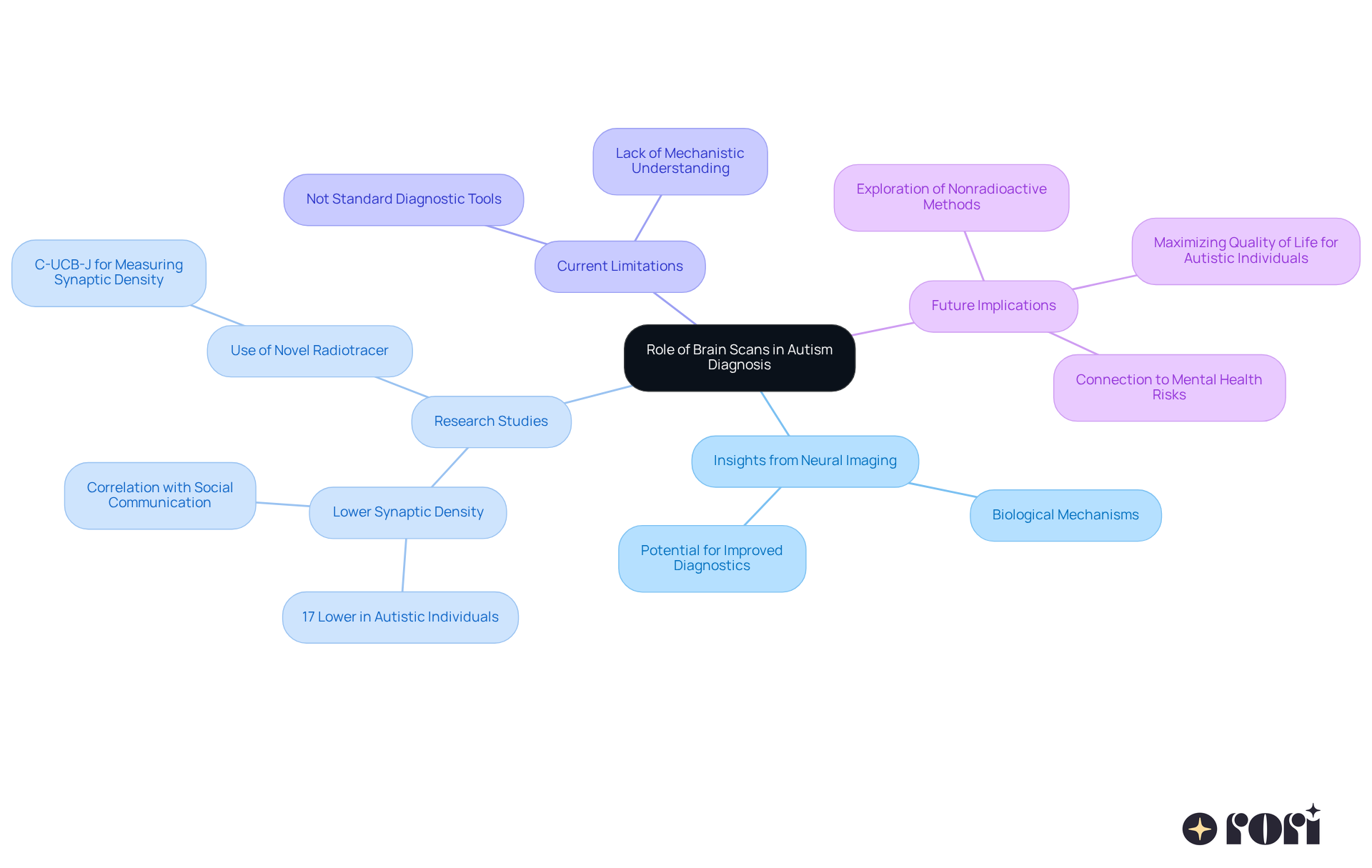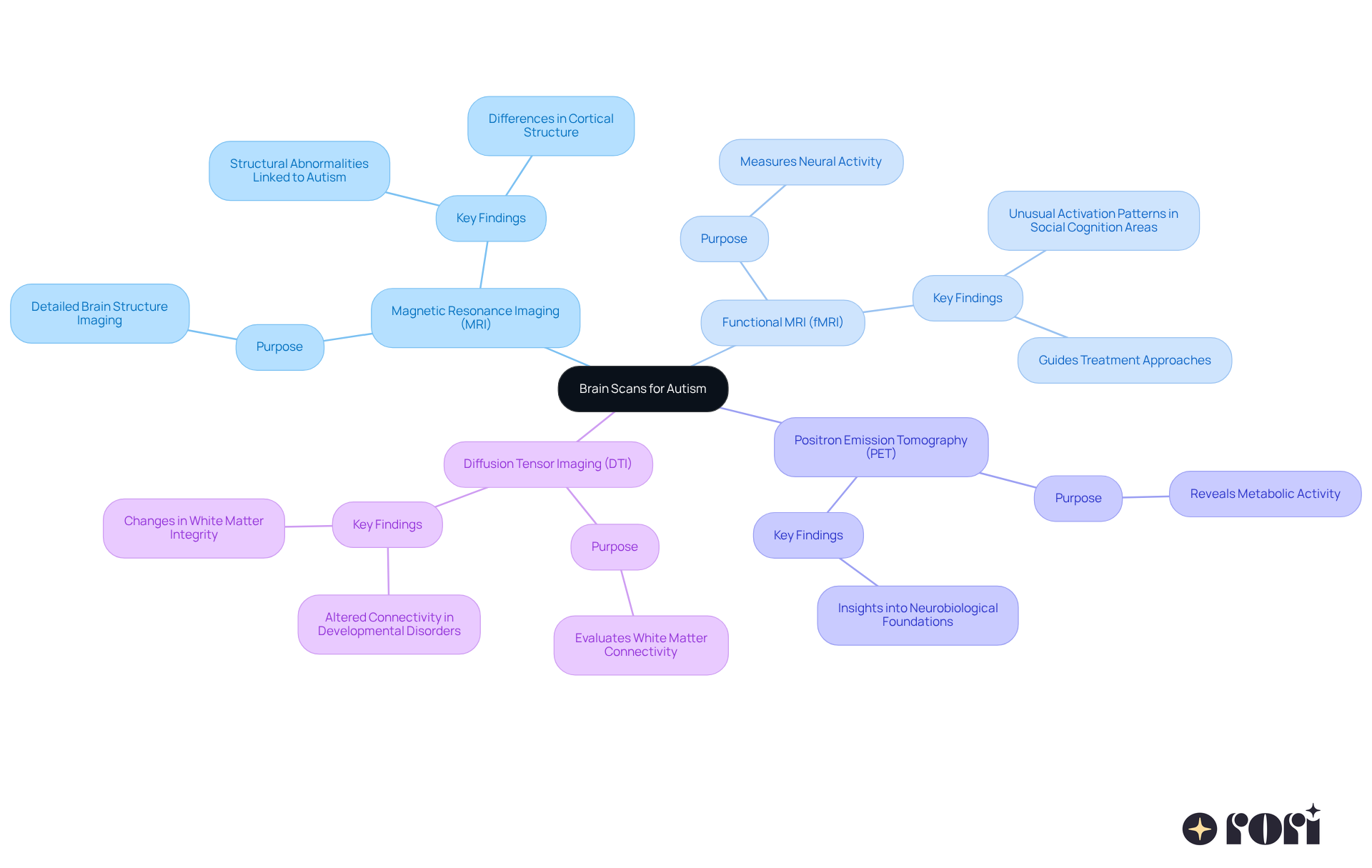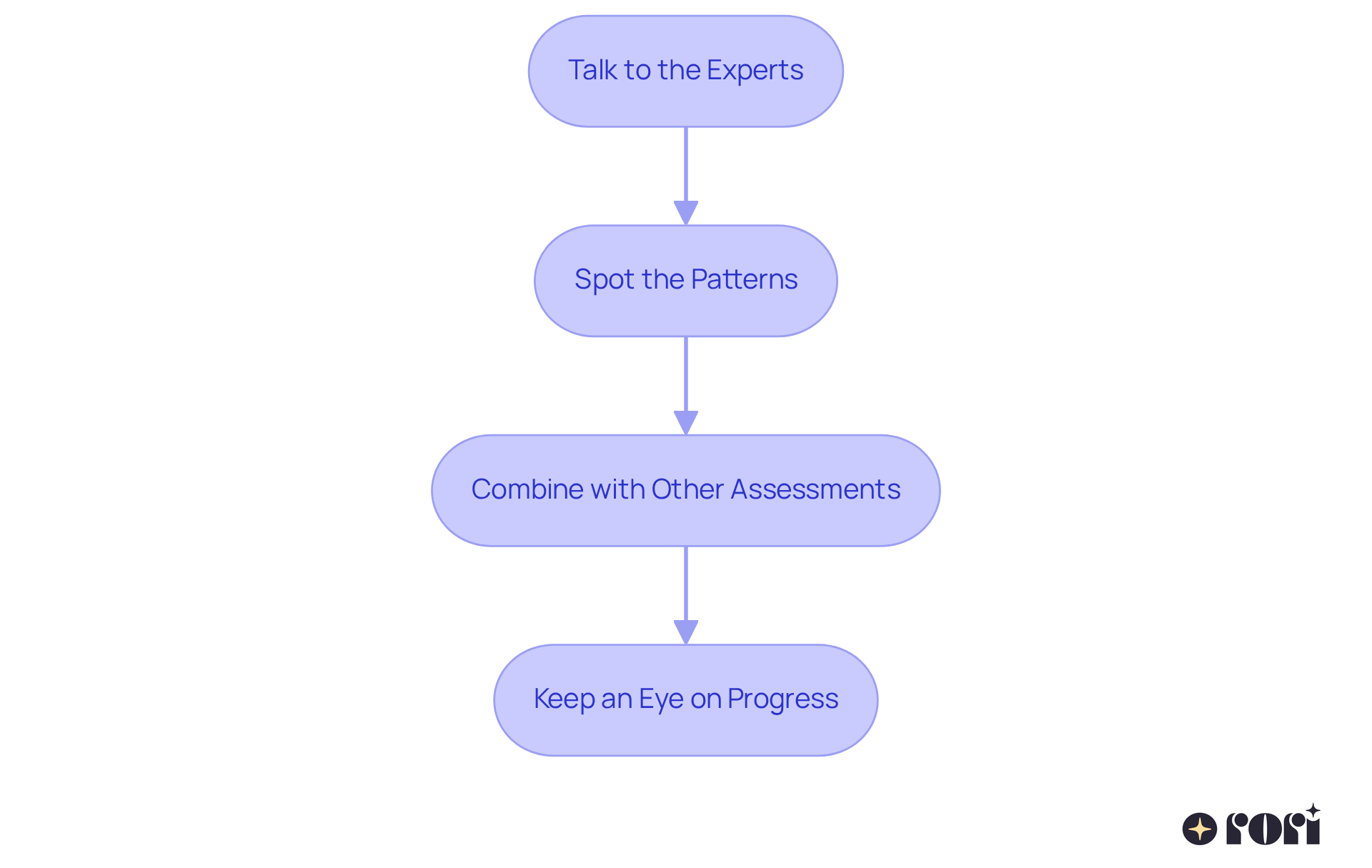Brain scans are becoming valuable tools for diagnosing autism spectrum disorder (ASD). Techniques like MRI and fMRI offer insights into brain structure and function, which could help uncover biomarkers linked to the condition. While these scans aren't standard diagnostic tools just yet, ongoing research is showing promise in enhancing diagnostic accuracy and guiding personalized treatment plans. This offers hope for better outcomes for children with autism.
As parents, it’s natural to seek the best for your child. Imagine having a clearer understanding of what’s happening in their brain—this could lead to more tailored support! It’s exciting to think about how these advancements might change the landscape of autism diagnosis.
We know that navigating the world of autism can feel overwhelming at times. But remember, you’re not alone in this journey. There are resources and communities ready to support you. Let’s explore this together! If you’re curious about how these brain scans might play a role in your child’s diagnosis, don’t hesitate to reach out for more information. We’re here to help you every step of the way!
Exploring brain scans in diagnosing autism spectrum disorder (ASD) is truly fascinating! It brings together the worlds of neuroscience and clinical practice in a way that feels both exciting and hopeful. As research progresses, these imaging techniques are becoming promising tools that might just change the way we understand and diagnose autism. They offer insights into brain structure and function that were once out of reach.
But here’s the big question: can these scans really improve diagnostic accuracy and help personalize treatment? Or are they still just on the outskirts of standard practice? In this guide, we’ll dive into the current landscape of brain imaging for autism. Our goal is to equip you with essential knowledge to navigate this evolving field together. Let’s explore this journey hand in hand!
The question of whether there is a brain scan for autism highlights how cerebral scans are becoming increasingly recognized as essential tools in diagnosing autism spectrum disorder (ASD). They offer valuable insights into how the brain is structured and functions. Recent studies have shown that neural imaging can uncover biomarkers associated with ASD, like differences in synaptic density and connectivity patterns. For instance, one study with 12 autistic adults and 20 neurotypical individuals revealed that those with autism had a 17% lower synaptic density, which correlated with differences in social communication. This research not only deepens our understanding of the biological aspects of ASD but also holds promise for improving diagnostic criteria and interventions.
While neural imaging techniques aren't standard diagnostic tools just yet, the inquiry of whether there is a brain scan for autism showcases their potential to enhance the accuracy of developmental disorder evaluations, which is truly exciting. Current studies are exploring nonradioactive methods that could be more cost-effective than traditional PET scans, opening up new avenues for understanding autism. As researchers continue to connect these findings with other related results, like the increased risk of mental health issues, it's important for parents to stay informed about the evolving landscape of ASD diagnosis. The integration of neural imaging into clinical practice could lead to more personalized and effective treatment plans tailored to each child's unique needs.
Let’s explore this together and see how these advancements can benefit our children! We’re here to help you every step of the way!

In the context of autism research and diagnosis, a common inquiry is, is there a brain scan for autism, as several types of brain scans are utilized, each providing unique insights that can significantly enhance our understanding of the condition. Let’s explore these together!
Magnetic Resonance Imaging (MRI): This non-invasive technique gives us detailed images of brain structures. It can help identify structural abnormalities that might be linked to autism. Research has shown some interesting differences in cortical structure between individuals with developmental disorders and their typically developing peers, highlighting how MRI can aid in understanding neural development.
Functional MRI (fMRI): This variant measures neural activity by detecting changes in blood flow. It allows researchers to see how different brain regions communicate during tasks. Studies have found unusual activation patterns in social cognition areas among individuals with autism, which can help guide treatment approaches.
Positron Emission Tomography (PET): PET scans reveal metabolic activity in the brain, pointing out areas with abnormal synapse density or neurotransmitter function. This technique provides insights into the neurobiological foundations of autism, contributing to a more comprehensive understanding of the disorder.
Diffusion Tensor Imaging (DTI): A type of MRI that focuses on the brain's white matter, DTI helps evaluate connectivity between various brain regions. This connectivity is often altered in individuals with developmental disorders. Changes in white matter integrity, like decreased fractional anisotropy and increased mean diffusivity, are commonly observed in those with autism, indicating disrupted neural pathways.
Understanding these different types of scans, such as is there a brain scan for autism, can really empower parents in discussions with their healthcare professionals. It’s all about finding what might work best for your child. As technology advances, we can also look forward to integrating these techniques with machine learning and artificial intelligence, which is expected to enhance diagnostic accuracy and early intervention strategies.
Remember, you’re not alone in this journey. We’re here to help you every step of the way! If you have questions or thoughts, feel free to share them. Your experiences matter!

When considering a brain scan for autism diagnosis, there are a few key factors that parents should keep in mind:
By keeping these factors in mind, parents can help create a smoother and less stressful experience when seeking a neurological assessment for autism diagnosis. We’re here to help you every step of the way!

Once the brain scan results are in, it's time for parents to dive into what they mean for their child's treatment:
Talk to the Experts: Schedule a follow-up with the specialist who ordered the scan. They’re there to break down the findings and explain how they relate to your child’s diagnosis and treatment plan. At Rori Care, our clinical leadership team is all about supporting families through this journey, making sure you feel informed and empowered.
Spot the Patterns: Researchers often ask, is there a brain scan for autism that can uncover patterns linked to it, such as connectivity differences or structural anomalies? Recognizing these patterns helps tailor interventions to meet your child’s unique needs, in line with the principles of Applied Behavior Analysis (ABA) that Rori Care emphasizes.
Combine with Other Assessments: It’s super important to look at imaging results alongside behavioral evaluations and other diagnostic tools. This well-rounded approach ensures that treatment plans are effective and holistic, boosting the chances of positive outcomes. Educating caregivers is key here, giving parents the knowledge to make informed choices that can positively impact their child’s progress.
Keep an Eye on Progress: If your child is receiving treatment, follow-up imaging might be recommended to track changes in brain structure or function over time. This monitoring can offer valuable insights into how well interventions are working and guide any necessary tweaks, including the question of whether there is a brain scan for autism. Active involvement from caregivers, as we encourage at Rori Care, can lead to better behavioral outcomes and help families navigate these challenges with confidence.
By engaging in discussions about brain scan results and tapping into the support and resources at Rori Care, parents can truly shape their child's treatment journey, making it personal and responsive to their evolving needs. Let’s explore this together!

Exploring brain scans for diagnosing autism opens up an exciting new path in our understanding of autism spectrum disorder (ASD). While these imaging techniques—like MRI, fMRI, PET, and DTI—aren't standard diagnostic tools just yet, they provide invaluable insights into what’s happening biologically with autism. By revealing both structural and functional differences in the brain, these scans could improve how accurately we diagnose ASD and help tailor treatment plans specifically for children.
Throughout this article, we’ve touched on various aspects of brain scans, from how they can help identify biomarkers linked to autism to practical tips for parents looking to get these assessments. It's so important for caregivers to connect with specialists, understand their insurance options, and prepare their little ones for the scanning process. Plus, when we interpret these results alongside behavioral assessments, we can develop more effective interventions that truly cater to each child's unique needs.
As technology advances, the combination of brain imaging with machine learning and artificial intelligence may refine our diagnostic processes and treatment strategies even further. Parents, it’s essential to stay informed and actively involved in your child’s journey—advocating for the best care possible. By exploring the potential of brain scans together, families can play a vital role in shaping the future of autism diagnosis and treatment, ensuring that their children receive the support they need to thrive. Let’s explore this together!
What is the role of brain scans in autism diagnosis?
Brain scans are becoming increasingly recognized as essential tools in diagnosing autism spectrum disorder (ASD), offering insights into brain structure and function.
What have recent studies shown about brain scans and autism?
Recent studies have uncovered biomarkers associated with ASD, such as differences in synaptic density and connectivity patterns. For example, one study found that autistic individuals had a 17% lower synaptic density compared to neurotypical individuals, which correlated with differences in social communication.
Are brain scans currently standard diagnostic tools for autism?
No, while neural imaging techniques show promise, they are not yet standard diagnostic tools for autism.
What potential do brain scans hold for autism diagnosis in the future?
Brain scans have the potential to enhance the accuracy of developmental disorder evaluations and may improve diagnostic criteria and interventions for ASD.
What advancements are being explored in neural imaging techniques?
Current studies are exploring nonradioactive methods that could be more cost-effective than traditional PET scans, which could open new avenues for understanding autism.
How could the integration of neural imaging into clinical practice benefit children with autism?
The integration of neural imaging could lead to more personalized and effective treatment plans tailored to each child's unique needs.
Why is it important for parents to stay informed about advancements in autism diagnosis?
Staying informed about the evolving landscape of ASD diagnosis helps parents understand the potential implications for their children's health and treatment options.